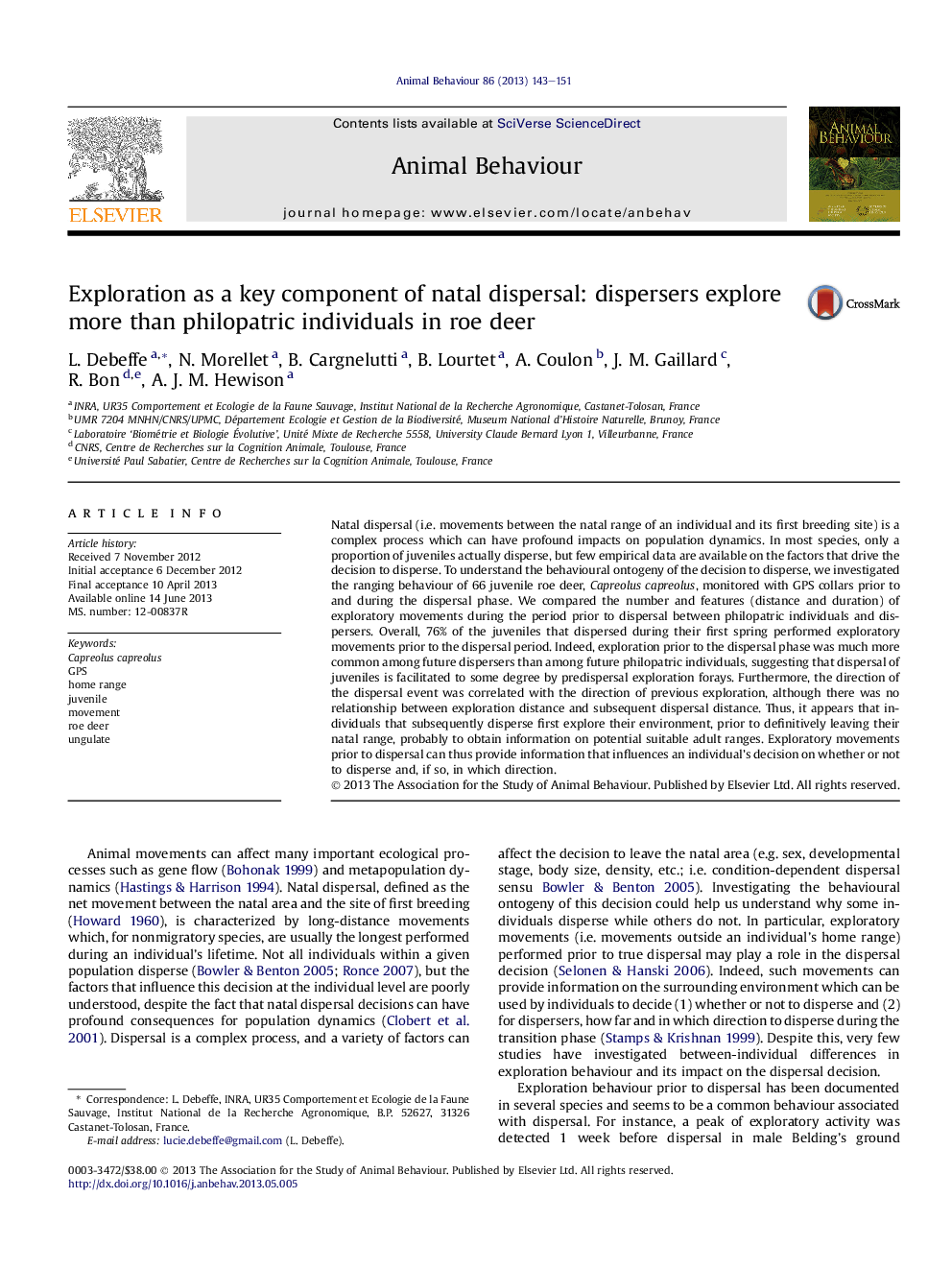| Article ID | Journal | Published Year | Pages | File Type |
|---|---|---|---|---|
| 10970696 | Animal Behaviour | 2013 | 9 Pages |
Abstract
Natal dispersal (i.e. movements between the natal range of an individual and its first breeding site) is a complex process which can have profound impacts on population dynamics. In most species, only a proportion of juveniles actually disperse, but few empirical data are available on the factors that drive the decision to disperse. To understand the behavioural ontogeny of the decision to disperse, we investigated the ranging behaviour of 66 juvenile roe deer, Capreolus capreolus, monitored with GPS collars prior to and during the dispersal phase. We compared the number and features (distance and duration) of exploratory movements during the period prior to dispersal between philopatric individuals and dispersers. Overall, 76% of the juveniles that dispersed during their first spring performed exploratory movements prior to the dispersal period. Indeed, exploration prior to the dispersal phase was much more common among future dispersers than among future philopatric individuals, suggesting that dispersal of juveniles is facilitated to some degree by predispersal exploration forays. Furthermore, the direction of the dispersal event was correlated with the direction of previous exploration, although there was no relationship between exploration distance and subsequent dispersal distance. Thus, it appears that individuals that subsequently disperse first explore their environment, prior to definitively leaving their natal range, probably to obtain information on potential suitable adult ranges. Exploratory movements prior to dispersal can thus provide information that influences an individual's decision on whether or not to disperse and, if so, in which direction.
Related Topics
Life Sciences
Agricultural and Biological Sciences
Animal Science and Zoology
Authors
L. Debeffe, N. Morellet, B. Cargnelutti, B. Lourtet, A. Coulon, J.M. Gaillard, R. Bon, A.J.M. Hewison,
